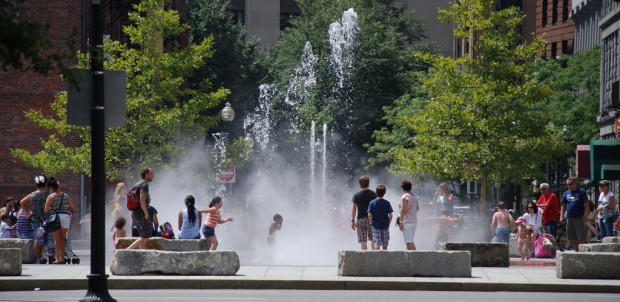This article,
Treasuring Urban Oases inspired me to write a little bit about the public realm design and urban development. Urban dwellers want our cities to become better places to live. We want our economies to grow and to maintain or evolve our city’s identities. The direction this takes us, widely agreed among urban planners, is toward walkable neighborhoods with a compact enough city form (a.k.a. density) to support multiple modes of public transit. This is a market-driven fact of urban economies – the most valuable urban properties are in what the American Institute of Architects calls Livable Communities. A close proximity among workplaces, residences and green spaces is a major part of the equation, and high-quality public spaces are more important than large quantities of public space.
The public space type that is most prevalent and important is the street space. Streets are not just the pavement for vehicles, but the entire right-of-way plus private frontages on each side. Planners and urbanists, to address the more holistic aspect of the “street,” now refer to “complete streets” which provide accommodation of pedestrian, bicycle, transit, as well as automobile travel. San Antonio has adopted a complete streets policy.
Treasuring Urban Oases
By MICHAEL KIMMELMAN
Published: December 2, 2011
Alexander Garvin, an architect and urban planner, has spent the better part of the last half-century thinking about New York City’s public spaces.

